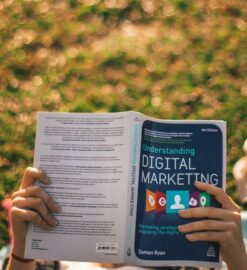An Interdisciplinary Research Team on our Decision-Making

Ever wondered how an interdisciplinary research team works and what it looks like? Or maybe how our decision-making works? We’ll dive into a research team that made discoveries in our thinking process and their interesting relationship!
What’ll be covered…
- An example of “What is an interdisciplinary research team?”
- Discoveries on how we make decisions
Overview
Daniel Kahneman and Amos Tversky’s relationship and studies while researching the human thinking process shows how an interdisciplinary team may function. Since the 1970s they’ve worked on a lot of research surrounding the human decision process.
Their research addressed the question “When human beings make decisions, what are they actually doing?”
While they are both from Israel, they moved to the United States, conducting research focused on these disciplines.
Other Posts that May Interest You
Collaboration
These two researchers had a very interesting relationship and collaboration. They met during their time as students at the Hebrew University of Jerusalem in the psychology department.
They also spent time in the military in Israel together proceeding to move to the United States.
Both of them connected their Israeli identity to their “professional motivations”, wanting to serve their country. They were together so much that some people referred to them as a “married couple”.
Differences
Yet, their similarities are said to have ended in their commonality of being in the Hebrew University. Because of this interdisciplinary team, they inevitably came across challenges in their relationship and work. Let’s start by depicting their differences, particularly in personality.
Kahneman
- psychologist and economist
- pessimistic, emotional, insecure, self-doubting, and more introverted
- studied more vision in psychology
Tversky
- specializes in cognitive and mathematical psychology
- optimistic, charming, extroverted, confident, charismatic, and clever
- considered a “mathematical psychologist” and studied decision-making
Challenges
Throughout their time together there were a couple of challenges that created a separation in the research team. For one, Kahneman felt overshadowed by Tversky. In the competitive realm of academia, Amos was often recognized over Daniel.
Kahneman also offered Tversky the opportunity to present at his seminar, where Kahneman disagreed with what Tversky shared. In this incident, Tversky ended up being in the wrong, claiming that people were close to being rational.
When their feud didn’t get resolved, they stopped speaking to each other. It worsened when the National Academy of Sciences asked Tversky about membership and he declined to recommend Kahneman.
As a result, their friendship and partnership dispersed before Tversky passed away in 1996 at just the age of 59. Following his death, Daniel then received a Nobel Prize in Economics for their work between 1971 and 1979.

What They Discovered
Despite these challenges, the two psychologists conducted many studies on the fact that we – humans – are not as logical as we think – aiming to address the problem of our irrational decision-making.
Through research, they discovered that humans are emotional and sensitive before they are rational in decision-making. By this, it could mean, for example, that we don’t use all of the information available to us when making a decision.
Instead, we use something called heuristics – which is an approach using guesses influenced by preferences and biases from past experiences to make decision-making shorter and easier. These are, as they found, often “wrong” decisions.
Interested in bias and science? Check out Artificial Intelligence Bias.
A famous question tested on research participants, was
If you could take a guaranteed $1,000 or risk on a bet to win $2,000 and double your money what would do?
The majority chose the safe route as opposed to taking a risk for more money.
Their Nobel Prize work focused on this type of decision-making and judgment. So, human decisions and behaviors are not statistical approaches, and errors are predicted, as opposed to simply common.
Hypothetical
Would they have been as successful if they would have conducted this research separately from each other?
As a result of their collaboration, their work developed to be more creative and original. It was said that they took very long to write when together, signifying the thoroughness of when they worked together.
For instance, Kahneman always worried, while Tverksy always wanted to “get it right” meshed well together, so it took a long time to write.
I find it interesting that these two researchers have such opposite personalities, yet their studies are based on something very close to just that which makes them different – parts of the brain.
Because they are so different I assume their decision-making also differs, therefore their work would have been drastically affected and may not have produced as many outstanding results.
Take Away on Interdisciplinary Research
In the future, you’ll probably come across collaborations with teammates that are different in personality, background, and/or specializations.
We can see that people who are opposites in personality and vary in background, resulting in major disagreements, can still produce extraordinary results that positively contribute to the world.
Hold value in respecting each other despite differences, be fair and ethical, and don’t let disputes remain unresolved.
Dive in Deeper / References
The book The Undoing Project by Michael Lewis covers these two researchers’ biography and work together.




Leave a Reply